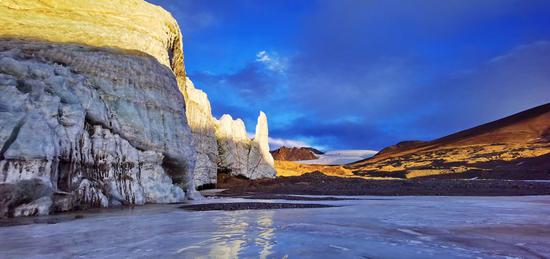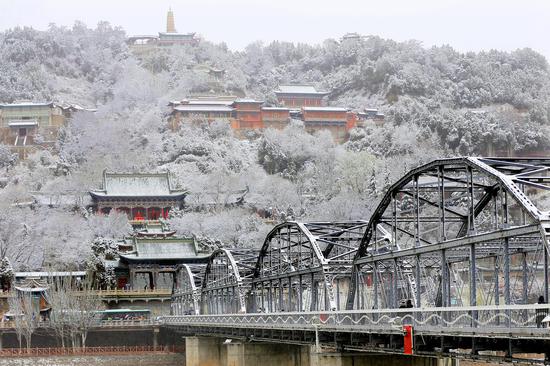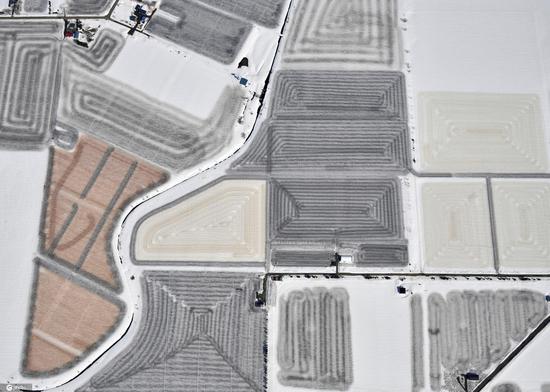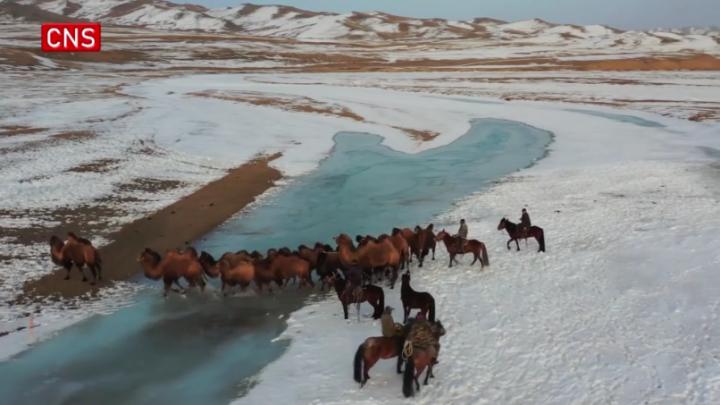
Photo taken on Jan. 15, 2021 shows the scenery of Purog Kangri Glacier, the third largest glacier in the world, in Shuanghu County, Nagqu, southwest China's Tibet Autonomous Region. (Xinhua/Shen Hongbing)
On the eve of this year's World Meteorological Day (March 23), the World Meteorological Organization (WMO) highlighted on Monday the pivotal role of the ocean in driving the world's weather and climate and in anchoring the global economy and food security.
"Climate change is hitting the ocean hard, but also increasing hazards for hundreds of millions of people," the WMO warned, highlighting how observations, research and services are more critical than ever before.
Devoting this year's World Meteorological Day to the theme "the ocean, our climate and weather," the WMO recalled that the ocean acts as the Earth's thermostat and conveyor belt by absorbing and transforming a significant portion of the Sun's radiation hitting the Earth's surface. Ocean currents form and circulate this heat around the planet, often for thousands of kilometers, thus shaping the Earth's weather and climate on global and local scales.
However, the natural ocean and atmosphere equilibrium is increasingly distorted by the effects of human activities.
"Ocean heat is at record levels because of greenhouse gas emissions, and ocean acidification continues unabated. The impact of this will be felt for hundreds of years because the ocean has a long memory," said WMO Secretary-General Petteri Taalas.
"In 2020, the annual Arctic sea ice minimum was among the lowest on record, exposing Polar communities to abnormal coastal flooding, and stakeholders, such as shipping and fisheries, to sea ice hazards," he said.
The WMO's data show that in 2020, warm ocean temperatures helped fuel a record Atlantic hurricane season and intense tropical cyclones in the Indian and South Pacific Oceans. Given that about 40 percent of the global population live within 100 km of the coast, there is an urgent need to protect communities from coastal hazards, such as waves, storm surge and sea level rise.
The WMO is releasing a report on the State of the Global Climate 2020 ahead of this year's Earth Day on April 22, featuring ocean-related climate indicators and impacts.


















































